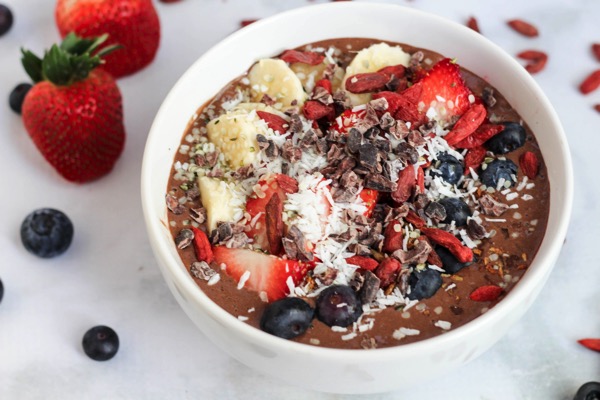Google how to calculate your own nutrition needs and the results will yield a plethora of online nutrition calculators. But how do you know which one to choose? Are they accurate? And then what happens? How do you apply this information to your own body? This post was written in collaboration with Mia, who is…
The post How to calculate nutrition needs appeared first on The Fitnessista.
Google how to calculate your own nutrition needs and the results will yield a plethora of online nutrition calculators. But how do you know which one to choose? Are they accurate? And then what happens? How do you apply this information to your own body? This post was written in collaboration with Mia, who is a Registered Dietitian on my team.
Nutrition calculators are EVERYWHERE online and it’s easy to receive macros and suggested caloric intake after answering a few questions. The problem is that these calculators are rarely accurate and don’t consider factors that can have a huge impact on how much and what types of fuel you should choose for your unique situation and health goals.
Online nutrition calculators fail to account for various factors, including:
Stress: mental, emotional, physical
Nutrition quality. How do you know you’re getting enough vitamin A, vitamin C, calcium, potassium and zinc?
How much NEAT (non exercise activity thermogenesis) are you getting? This is the amount of activity you get in each day just from house work, moving around, running your kids to practice, walking to dinner with your spouse, etc.
Nutrient deficiencies. Are you on birth control, pregnant, breastfeeding, are you currently injured or recovering from surgery or a medical procedure?
How long have you been in an energy deficit? Have you potentially decreased your metabolic baseline from over-exercising and under-fueling?
What is your environment like? EMF’s, mold, water quality, heavy metals, personal care products, plastics, chlorine, etc.
How to calculate nutrition needs
So, how can you customize your nutrition for your own needs?
Ideally, you want to work with a certified nutrition coach or Registered Dietitian (not a random person with a nice bod on Instagram). After a full assessment, they can objectively help you evaluate the above along with your personal biometrics and customize a perfect plan for you. Having a coach that can look at the entire picture will help you weed out the “shoulds” and noise from the general recommendations and create a plan tailored to you.
So what can you do in the meantime?
Generally speaking, if we are looking to optimize health and longevity, we want to ensure that our diets are meeting the following requirements:
Optimal protein intake, preferably from animal sources. Include a wide variety of grass fed, pasture raised meats (all cuts) like beef, turkey, pork, chicken and wild caught fish like salmon, snapper, shrimp, sardines, anchovies, oysters, etc.
Maximize protein at each meal, eating a palm to palm and a half full of protein of choice. If you aim for 3 meals and 2 snacks per day (pre/post workout) you can easily hit a minimum of 100g without tracking or weighing any food!
Include vitamin A rich foods such as grass fed beef liver, raw milk dairy, egg yolks, peppers, sweet potatoes and carrots.
Enjoy vitamin C rich foods such as peppers, kiwi, citrus, pineapple, acerola cherries, plums, etc.
Include vitamin D rich foods such as egg yolk, herring and sardines, Cod liver oil (non fortified), tuna, etc.Include foods rich in potassium such as bananas, dates, white potatoes, prunes, tomatoes and avocado.
Remove the PUFAs (polyunsaturate fats) and seed oils, which increase inflammation in the body (canola, vegetable, rapeseed, peanut, cottonseed, sunflower, safflower, etc.). Here is a post with our favorite cooking oils!
Remove high fructose corn syrups and sugar sweetened beverages. These drive inflammation in the body and provide zero nutritional value.
Add real salt to your food. When consuming a whole food based diet, most people will naturally drop their sodium intake. This can lead to an imbalance of electrolytes, poor sleep, and headaches. Salt each meal and add a pinch to your water if you’re still feeling low. Your body and taste buds will let you know how much salt is adequate.
How do you ensure that you’re getting enough to meet your activity requirements?
Start with this basic template and follow it for a week.
If you’re feeling satiated, energy feels good, and clothes fit well, proceed on with your bad self. If you’re noticing a slump during your workout, you’re hungry by 5pm and dinner isn’t enough, or you can’t sleep, consider adding a bit more carbohydrates around your workout and extra fat at lunch from foods like avocados, egg yolks or fattier cuts of meat.
– Eat a pre and post workout snack
– Eat 3 meals consisting of at least a palm to palm and a half size of protein.
– Fill your plate with at least ⅓-½ vegetables of your liking at meal times.
– Enjoy your food! Life’s too short to eat vegetables you hate.
– Fill in the remainder of your plate with healthy fats or carbohydrates as you enjoy them.
If you’re still confused and the thought of not tracking food gives you anxiety, apply for 1:1 coaching here. We have 3 spots available for summer and can help provide you with the tools, a customized plan, and regular feedback to help you optimize your health goals.
The post How to calculate nutrition needs appeared first on The Fitnessista.










